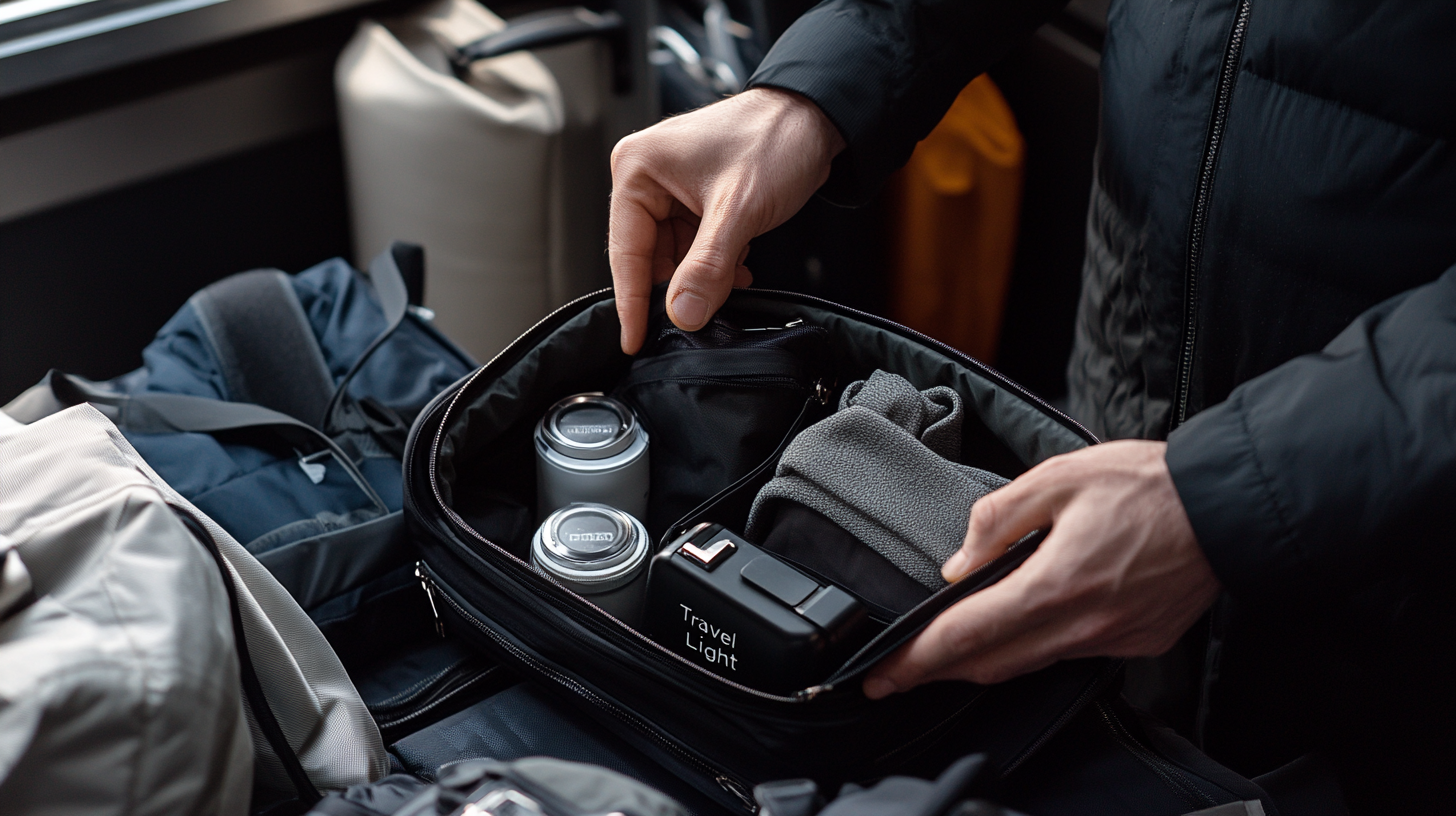10 Savvy Ways to Save on Business Travel

Business travel doesn’t have to drain a company’s resources, even with rising tariffs and soaring expenses. According to the 2024 Global Travel Forecast, 60% of business travel suppliers still consider cost-management a key challenge, yet I’ve personally witnessed organizations cut travel expenses by as much as 15% with strategic early bookings and mindful planning. Whether you’re just getting started or you’re a seasoned road warrior, setting your sights on smart spending can make each trip not only cost-effective but also a smoother overall experience.
1. Book Flights Early and Midweek

Booking flights even a week or two in advance can lead to substantial discounts. Tuesdays and Wednesdays often come with more competitive fares, aligning with well-known tips from industry pros. I’ve found that picking a midweek departure usually offers a better seat selection, especially for business travelers looking to maintain their productivity in flight.
In my own travels, waiting too long to lock in a seat has led to surging prices. A recent study suggests that booking domestic flights around 21 days prior can save up to 20% off peak rates. Having tried this approach multiple times, I can confirm that early planning pays off both financially and logistically—there’s less scrambling to find a last-minute seat and more time to prepare for the trip ahead.
For an even better edge, set up fare alerts via travel aggregator apps. This strategy allows you to monitor price dips and act quickly. By combining careful research with a proactive attitude, it’s possible to make even the busiest business travel schedule more wallet-friendly.
2. Fly During Off-Peak Times

Entrepreneurs and frequent flyers looking to capitalize on fewer crowds and cheaper fares can aim for off-peak flight times, typically mid-day, late at night, or very early in the morning. I’ve noticed these flights tend to remain on the lower end of the price range, especially if you’re willing to be flexible with your departure and arrival slots.
According to industry data, flights departing between 9 p.m. and 6 a.m. often cost up to 10% less compared to prime-time slots. When I’ve opted for an early flight, it has almost always translated to fewer lines at the check-in counter and shorter waiting times at security. That means you spend less time stuck in airport queues and more time chatting with colleagues, reviewing presentations, or simply recharging.
If you can handle unconventional travel hours, off-peak flights are worth the slight inconvenience. They can also help you squeeze in a little more exploring time once you reach your destination, maximizing both your work and leisure opportunities.
3. Travel Light

Packing only the essentials in a carry-on bag builds efficiency into your journey before you even leave home. Over the years, I’ve learned the hard way that checked luggage fees can eat into a travel budget quickly. By minimizing bags, you also lessen the chance of losing personal items and having to wait at the baggage carousel.
Large suitcases often trick you into packing items you don’t really need. A simple capsule wardrobe can handle most business scenarios, and personal care products are often provided by hotels or are easy to pick up in transit. In my own experience, trimming down to a compact carry-on leads to quicker exits from the airport, which means you can get settled or get to that crucial meeting faster.
Additionally, traveling light helps if you’re looking to explore alternative transport options at your destination. Small bags fit easily on local buses, trains, and rideshares, saving you from paying for oversized luggage fees or renting larger vehicles.
4. Choose Flexible Airlines

Business plans change—flights get canceled, meetings run over, and clients may need to reschedule. Choosing airlines that offer flexibility, such as flight credits or minimal fees for rebooking, is a critical component of any cost-conscious travel strategy. I’ve personally benefitted from carriers that allow free changes within a certain window, keeping me on top of my itinerary without creating a budget nightmare.
According to an analysis by travel management platforms, nearly 25% of business trips encounter schedule changes. That means having the option to adjust flights without steep penalties can be a game-changer, especially if you need to accommodate last-minute client requests or shift your route due to weather conditions.
When formulating a travel policy for your team, it’s worth researching which airlines offer these perks. Consolidating flights with a carrier known for flexibility can also lead to loyalty rewards that further stretch your travel budget.
5. Leverage Hotel Loyalty Programs and Corporate Rates

Frequent flyers who spend considerable time on the road can quickly rack up hotel loyalty points. In my experience, signing up for multiple programs has been invaluable. Many hotels now have tiered benefits such as free breakfast buffets, room upgrades, and bonus points you can redeem on future stays.
A recent hospitality study noted that dedicated loyalty members can save up to 15% compared to standard room rates. Some companies also negotiate corporate deals with major hotel chains, which go beyond discounted nightly rates and might include extras like conference room access or free Wi-Fi. I’ve seen this strategy significantly reduce costs for organizations that send teams on regular business trips.
Don’t hesitate to ask about corporate rates or special promotions when booking. If you travel frequently to the same city, building a relationship with hotel management might even earn you tailored amenities, making your working stay more comfortable and cost-efficient.
6. Opt for Budget-Friendly Accommodations

While luxurious hotel features might be tempting, I’ve often found excellent value in budget-friendly accommodations such as boutique hotels, extended-stay suites, or short-term rentals. These options often come with perks like kitchenettes, free parking, or even freshly prepared breakfasts that can cut down on your daily food costs.
Given advancements in travel technology, it’s easier than ever to pinpoint properties that balance affordability with comfort. Some mid-tier brands even rival high-end hotels in terms of amenities but keep rates more accessible. If you’re traveling for work in a near-future scenario where AI enhances your booking options, you can quickly filter for accommodations that suit both your budget and your taste.
It’s also worth checking for event or conference discounts if your business trip aligns with a large industry gathering. Hotels often partner with event organizers to offer reduced rates, making it even simpler to stay within your expense limit.
7. Take Advantage of Meal Deals

I’ve discovered that scouting free breakfasts or corporate meal discounts can make a tangible difference to a travel budget. Many hotel loyalty tiers offer complimentary breakfasts to members, a priceless benefit for all-day meeting schedules. Grabbing a plate of fruit and a protein source in the morning means it’s easier to skip or trim down on pricey lunch options later.
Bringing a small stash of non-perishable snacks—think protein bars or nuts—into your carry-on is another step I’ve found invaluable. Whether it’s a delayed flight or a packed schedule, having something on hand prevents impulse purchases at airport kiosks or expensive convenience stores.
If you’re traveling in a group, look for local restaurants offering group discounts or special business menus. Some establishments near convention centers frequently roll out meal deals to attract travelers. Asking around or doing a quick online check can unlock additional hidden savings.
8. Use Cost-Efficient Transport

In many of the cities I’ve visited, local buses, metros, or trains are both inexpensive and efficient, often outpacing the cost of renting a car. In my view, this approach doesn’t just help the wallet—it also allows for a more authentic travel experience, letting you mingle with residents and get a feel for the region’s day-to-day vibes.
Industry reports indicate that airport car rentals can be up to 25% more expensive than downtown rentals or rideshares. I’ve personally faced unexpected parking fees when renting vehicles at major airports, so opting for public transport or a well-timed rideshare can be the better deal. From personal experience, it can also save you the hassle of navigating unfamiliar roads after a long flight.
If you do need to rent a car, check to see if a membership program or corporate agreement yields a discount. Combining that with a fuel-efficient or hybrid model can taper your fuel costs, too, while helping you travel a bit greener.
9. Harness Digital Tools

From fare alerts on aggregator sites to advanced expense management platforms, technology is your reliable co-pilot in cost control. I’ve observed how automated booking systems minimize administrative work. They can sync with a company’s travel policies, flagging anything that deviates from preset budgets or guidelines.
A recent technology review indicated that businesses using automated expense management saved an average of 12 hours of labor per week. In my own case, harnessing these tools leaves me more time to focus on trip objectives, be it finalizing a presentation or prepping for a client pitch. Instead of puzzling over receipts, I can let the system streamline everything.
Some travelers also rely on digital wallets and co-branded travel cards. These tools automatically categorize expenses, making reimbursements faster and more transparent. It’s a trust-building measure, ensuring everyone on your team knows where the travel budget is going.
10. Track Expenses and Reward Smart Spending

A practical travel policy encourages accountability. Defining clear guidelines for flights, hotels, and meal allowances helps establish a travel culture that values efficiency. I’ve noticed that when employees know they’re rewarded for making savvy choices—like snagging cheaper flights or booking budget-friendly accommodations—they become more proactive about keeping costs in line.
According to a 2025 survey in corporate finance circles, over 40% of companies now use incentive-based programs to encourage thrifty travel decisions. This approach fosters a spirit of responsible spending, and fosters trust between leadership and employees.
When it comes to expense reports, consistency and timeliness matter. Make it an organizational habit to submit receipts promptly and to review them for accuracy. Staying on top of small details helps prevent hidden costs from sneaking into your travel expenses.
Final Thoughts

Business travel can indeed be an asset rather than a burden when approached with research, creativity, and consistency. Early planning, flexible bookings, mindful packing, and an embrace of digital tools serve as the foundation of cost-effective journeys. Each step you take toward financial awareness can ultimately free up resources to invest in stronger client relationships, expanded networking opportunities, or even industry-leading innovation.
The landscape of travel continues to evolve, especially in a time where advanced technology and the love of exploration converge. Tapping into established loyalty programs, leveraging corporate slack, and encouraging responsible spending habits all play a part in shaping trips that deliver measurable value—without piling on the expenses.
Amelia Yeaher’s Take
From my perspective, efficient travel planning sits right at the intersection of curiosity and practicality. Every flight, every layover, and every hotel stay offers a chance to unlock something new—whether it’s a local tradition you stumble upon or a budget hack that completely redefines your trip.
I’ve spent countless hours observing how futuristic innovations can blend seamlessly with a timeless love for adventure. Let’s keep building on that synergy, channeling both passion and organization to make each journey more meaningful and budget-friendly.






